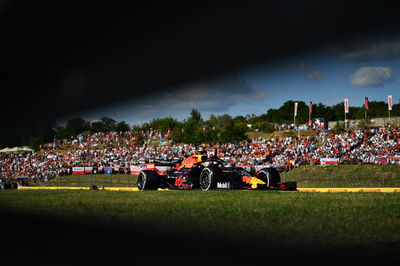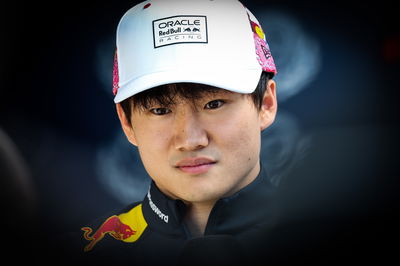The risk and reward of the F1 mid-season driver swap
Red Bull has decided to roll the dice on its driver line-up at the mid-way point of the 2019 Formula 1 season by swapping Pierre Gasly and Alexander Albon from the Belgium Grand Prix.
Despite being an infrequent occurrence, mid-season driver changes are not unheard of in F1. While some have inspired great success, others have flopped spectacularly.
We take a look at some recent examples that worked and those that failed to pay off…
Two good
Max Verstappen and Daniil Kvyat – 2016
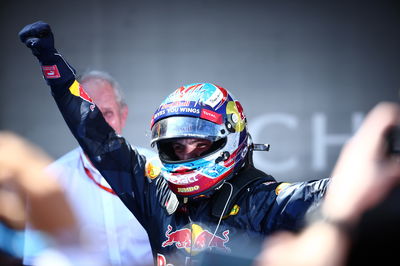
Red Bull has decided to roll the dice on its driver line-up at the mid-way point of the 2019 Formula 1 season by swapping Pierre Gasly and Alexander Albon from the Belgium Grand Prix.
Despite being an infrequent occurrence, mid-season driver changes are not unheard of in F1. While some have inspired great success, others have flopped spectacularly.
We take a look at some recent examples that worked and those that failed to pay off…
Two good
Max Verstappen and Daniil Kvyat – 2016
After a difficult start to the 2016 season for Daniil Kvyat, Red Bull sent shockwaves through the F1 paddock by promoting its protégé Max Verstappen to the senior squad four races into his second season in the sport.
The Dutchman, just 18 at the time, had already raised plenty of eyebrows with an impressive transition into F1 at Toro Rosso as he outscored teammate Carlos Sainz Jr and finished an impressive 12th in the championship in his rookie campaign.
A solid start to 2016 for Verstappen coincided with pressure mounting on Red Bull driver Kvyat. Despite taking a podium in China, the Russian ended up coming under fire for clashing with Sebastian Vettel at two consecutive races, with a shunt in Sochi prompting Red Bull to pull the trigger ahead of the Spanish Grand Prix.
Verstappen made a dream start to life at Red Bull by recording a memorable victory in Barcelona to become F1’s youngest-ever race-winner, while Kvyat’s struggles continued at Toro Rosso into 2017 before he was ultimately replaced by Gasly (his new teammate as of Spa…).
Red Bull’s gamble proved to be a masterstroke, with Verstappen going on to establish himself as one of the standout drivers on the current grid by adding a further six wins to his maiden triumph since his graduation.
Carlos Sainz Jr. and Jolyon Palmer - 2017
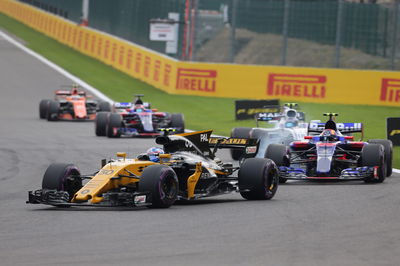
Red Bull-contracted driver Sainz made an anticipated loan switch to Renault early with four races still remaining in the 2017 F1 season, taking the place of Jolyon Palmer after the Japanese Grand Prix.
Palmer had struggled all year and was unable to match the consistency displayed by teammate Nico Hulkenberg, prompting Renault to take action after he managed just one top-10 finish in the opening 16 rounds - a sixth place finish in Singapore.
Sainz impressed throughout the campaign with Toro Rosso, most notably at the Singapore GP, where he took an excellent fourth. He would go on to finish seventh at the United States GP with new team Renault, before turning in another strong campaign in 2018, helping the French squad to secure fourth spot in the constructors’ championship.
With his original pathway to Red Bull seemingly locked out with Daniel Ricciardo and Verstappen filling the seat space at the Milton Keynes outfit, Sainz looked towards McLaren for his big break and joined the team for 2019, acting as replacement for fellow countryman Fernando Alonso. He now sits an impressive P7 in the drivers’ championship as the leading midfield driver.
Two bad
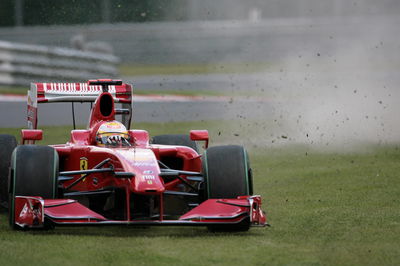
Luca Badoer and Giancarlo Fisichella - 2009
With Felipe Massa suffering life-threatening injuries after being struck on the head by a spring during qualifying for the 2009 Hungarian Grand Prix, Ferrari was in need of a replacement to complete the remainder of the season while Massa recovered.
After Michael Schumacher’s bid to return to F1 after three years away was scuppered by a neck injury, test and reserve driver Luca Badoer was the man picked to take Massa’s seat. It was the 38-year-old’s dream drive, coming 10 years after he had last raced in F1 with Minardi. But his spell at the Scuderia was short-lived.
Badoer was unable to make an impression in his opening two races at Valencia and Spa, failing to finish higher than 14th, while teammate Kimi Raikkonen scored the team’s first victory of the season in Belgium.
Badoer was subsequently dropped and replaced by fellow Italian Giancarlo Fisichella, who had just starred at Spa for the backmarker Force India squad by claiming a sensational pole position and second-place finish behind Raikkonen.
But Fisichella fared little better than Badoer. He also was unable to record a single point for Ferrari in his five-race spell at Maranello prior to Massa’s return for 2010. A best result of ninth was achieved at Monza.
Romain Grosjean - 2009
When Renault sacked the underperforming Nelson Piquet Jr, who had not scored a point in the opening 10 rounds of 2009, highly-rated reserve and test driver Romain Grosjean was drafted in to partner Fernando Alonso at the Enstone squad for the remainder of the season.
After claiming multiple titles in the junior categories, including the 2008 GP2 Asia Series, and having made a strong start to a full GP2 campaign with two victories, Frenchman Grosjean was viewed as the ideal replacement for Piquet in what it described as an “aggressive approach” to the second half of 2009.
But the youngster failed to better Piquet’s results and was released by Renault at the end of the year, causing him to drop back into GP2. Grosjean admitted he considered quitting motorsport after the lowest point of his career, but recovered from the setback to win the GP2 title in 2011 and ultimately earn himself an F1 drive with the rebranded Lotus team for 2012.
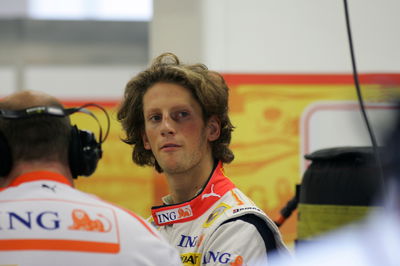
How will Albon fare?
The lingering question heading to Spa is how will Albon fare by being thrown into the deep end and finding himself in the Red Bull hotseat just 12 races into his fledgling F1 career, following a remarkable rise over the last 18 months.
A big move at an early stage of his career could have harmful consequences if things do not go well, such is the cut-throat approach held by Red Bull and its motorsport advisor Helmut Marko, who wastes no time wielding the axe on those he deems to be underperforming.
Red Bull finds itself in the advantageous position of having four drivers under contract (Verstappen, Albon, Gasly and Kvyat). Out of those, Albon is the only one with no prior experience in the senior team fold.
The remaining nine races of the season gives Red Bull the opportunity to evaluate Albon within the team environment - as well as providing a direct performance comparison against Gasly in the same race-winning machinery - before making a decision on its 2020 line-up.
By the conclusion of the 2019 season, Red Bull will know exactly which driver acts as the best option to partner Verstappen moving into next year.

